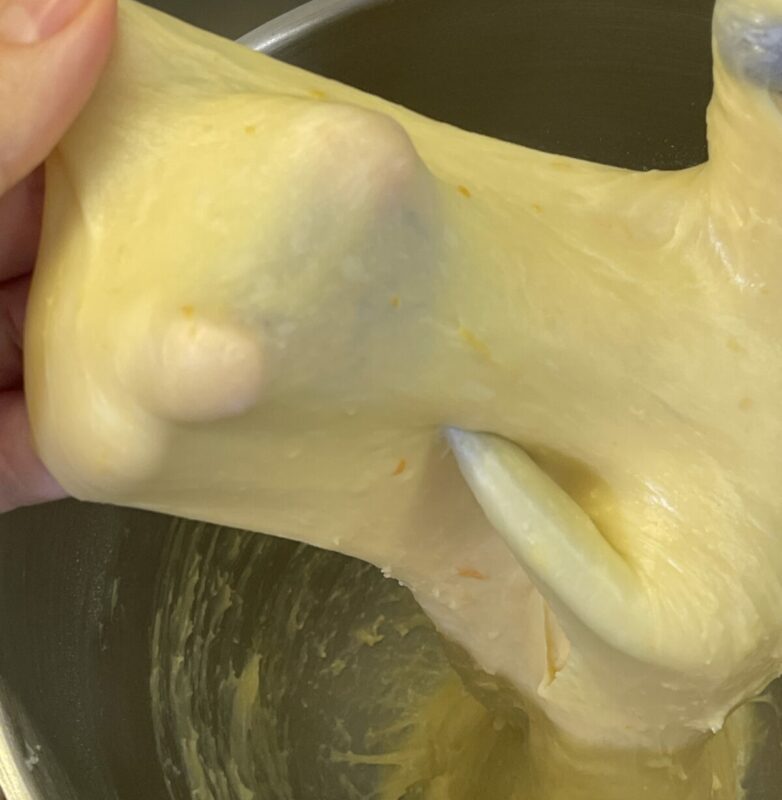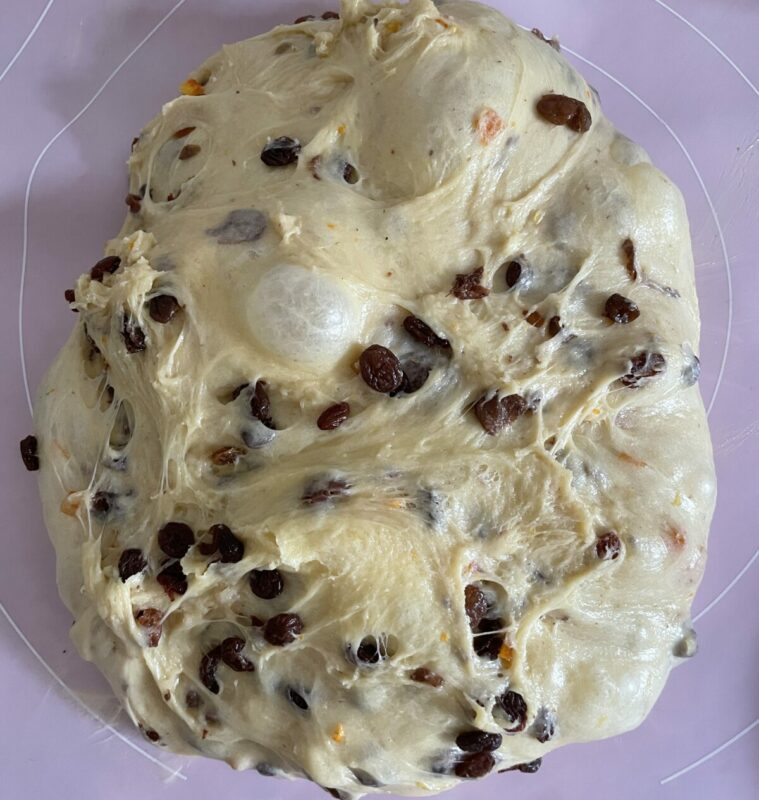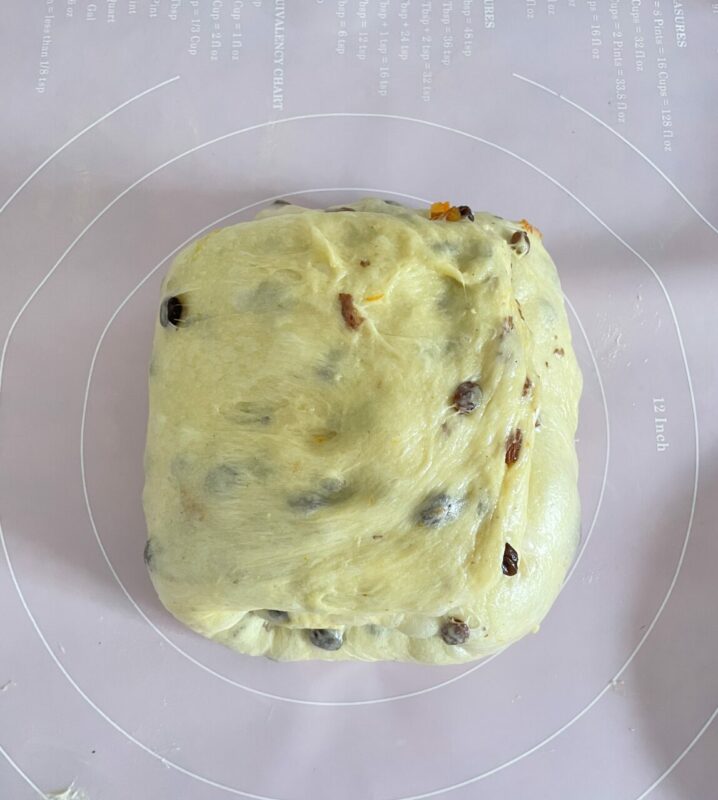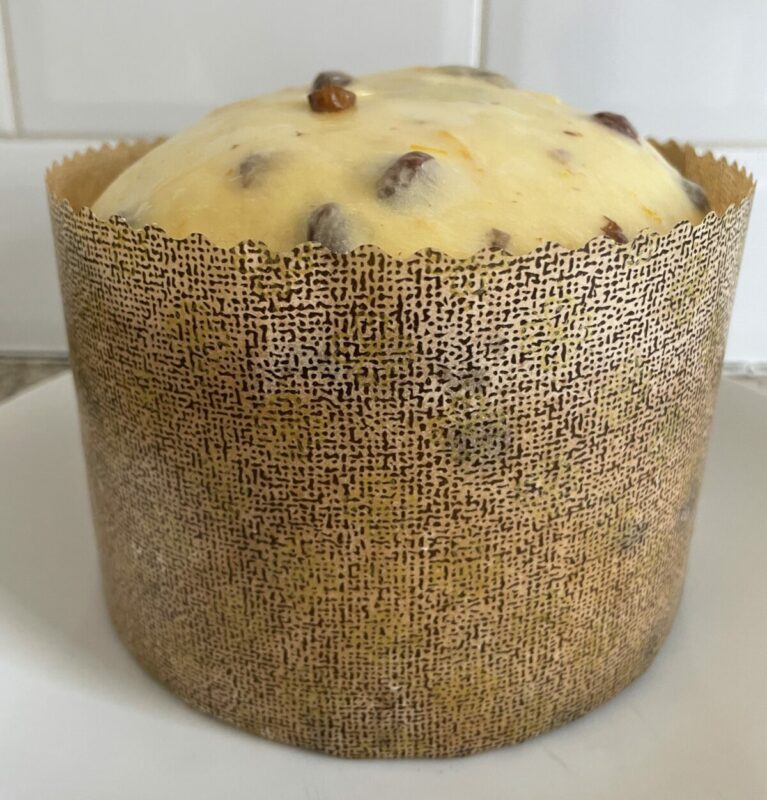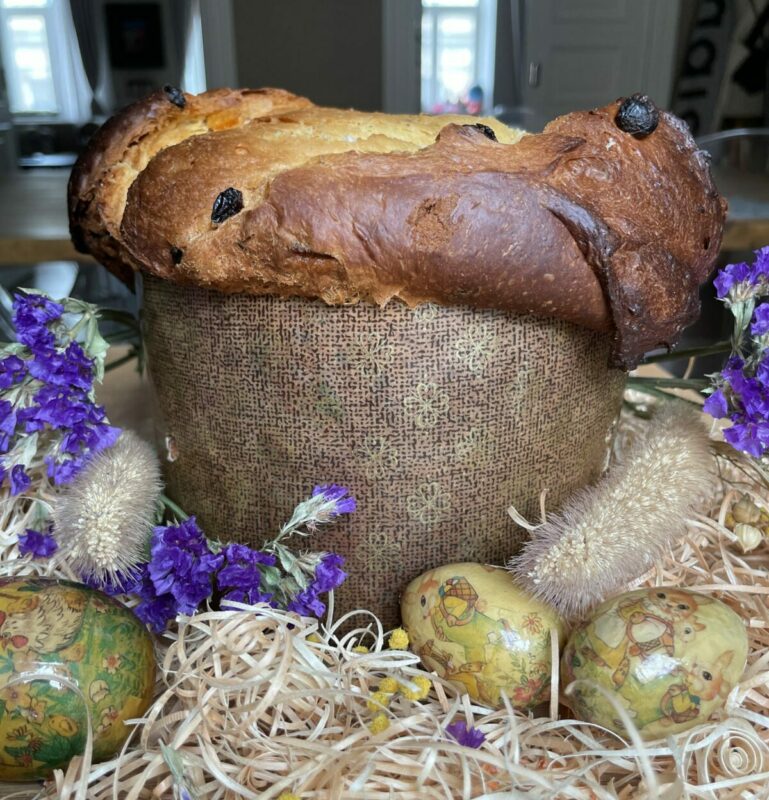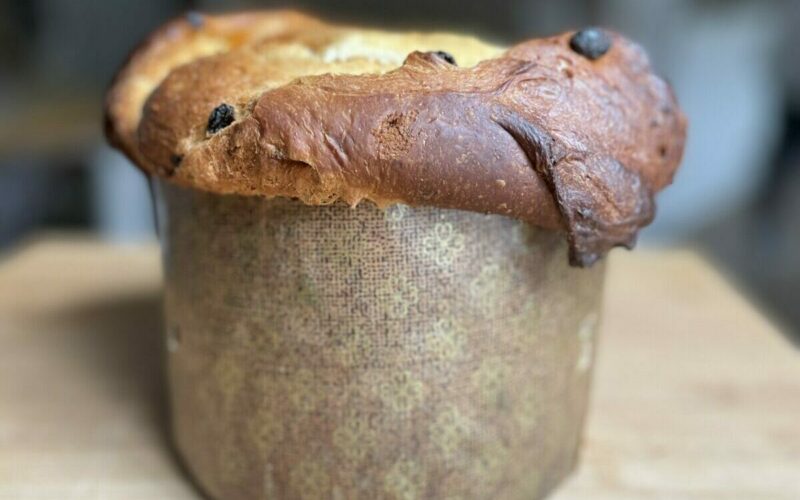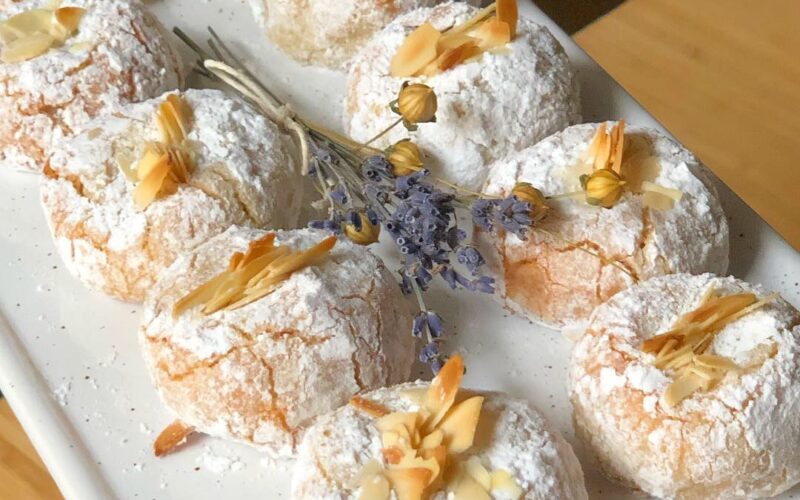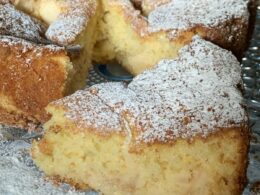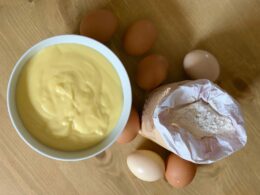You will need:
Biga
- 100g Flour
- 7g Fresh yeast (or 2g dry yeast)
- 1 tbsp Honey
- 60g Warm milk
Dough
- 400g Flour
- 7g Fresh yeast (or 2g dry yeast)
- 4 Eggs (medium)
- 3 Egg yolks
- 160g Sugar
- 160g Butter (softened)
- 10g Butter for baking
- Zest of 1 Lemon
- 40g Candied Orange Peels
- 160g Raisins
- 5g Salt
- Vanilla
Stage I: Biga
- In a container, combine 100g of flour, dry yeast (check the packaging to see if the yeast needs to be pre-dissolved in liquid), honey, and warm milk.
- Knead the dough well and quickly, cover it with plastic wrap, and place it in the turned-off oven with the light on for 1 hour.
- Then transfer the dough to the refrigerator for the entire night (approximately 12 hours).
Stage II: Dough
- Take the dough out of the refrigerator and let it sit at room temperature for 2 hours.
- Place the dough in the dough mixer. Add 200g of flour (from the total amount), 2g of yeast, and 60g of sugar (from the total amount).
- Begin kneading using the dough hook attachment.
- Once the dough reaches a uniform consistency, gradually add 2 eggs while continuing to knead the dough.
- After the dough absorbs all the ingredients and achieves a homogeneous texture, slowly add 60g of butter (from the total amount).
- Once the dough reaches a uniform consistency and thoroughly incorporates all the ingredients, transfer it to the table and shape it into a ball.
- Place the dough in a tall container, cover it with plastic wrap, and leave it in the turned-off oven with the light on for at least 2 hours.
- Then transfer the dough to the refrigerator for the entire night (approximately 12 hours).
Stage III: Dough
- Take the dough out of the refrigerator and let it sit at room temperature for 2 hours.
- At this point, soak the raisins in water. Finely chop orange peels and grate the lemon zest.
- Now, place the dough in the dough mixer. Add vanilla, the remaining flour, 2 eggs, and 3 egg yolks. Start kneading using the dough hook attachment.
- Also, add lemon zest, the remaining sugar, salt, and gradually add the remaining butter while continuing to knead.
- Once the dough reaches a uniform consistency and all the ingredients are well incorporated, add orange peels and raisins (after draining excess liquid).
- Knead the dough until it becomes homogeneous, then transfer it to the work surface and shape it into a ball.
- Place the dough in a tall container, cover it with plastic wrap, and leave it in the turned-off oven with the light on for at least 2 hours.
Stage IV: Baking
- Once the dough has doubled in size, place it on the work surface and, after stretching it a bit, fold it like an envelope. Then shape it into a ball and place it in the baking form.
- Cover with plastic wrap and leave the dough in the turned-off oven with the light on for at least 2 hours. The dough should rise to the edges of the form.
- Take the dough out of the oven and remove the plastic wrap. Leave the dough in this state for 15 minutes at room temperature. Once the top surface dries, very carefully and with a very sharp knife, make a cross-shaped incision, and in the middle, place 10g of butter.
- Preheat the oven to 180°C and place a small container with water inside. Bake the panettone for 50 minutes. The internal temperature of the panettone should reach 100°C.
- Panettone made with yeast has a shorter shelf life compared to sourdough panettone (sourdough panettone recipe) and (sourdough starter recipe). Store the panettone in a well-sealed bag for 2-3 days.
